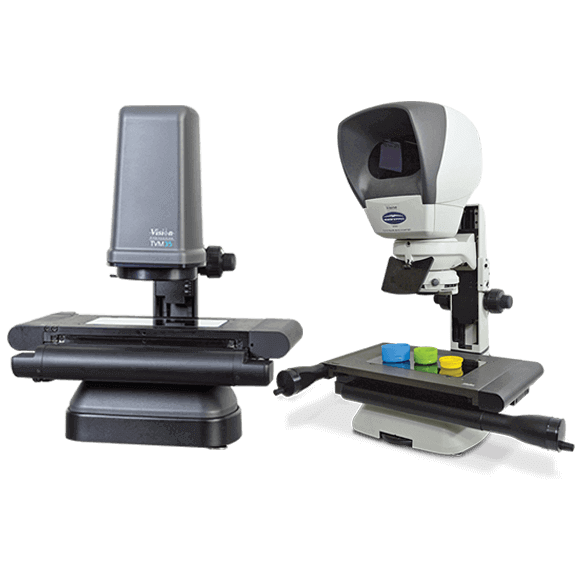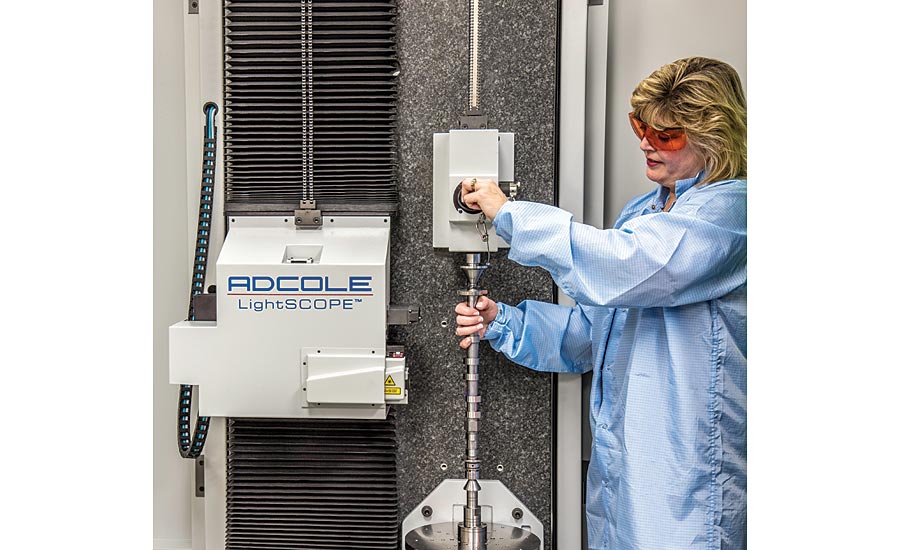Comprehending Exactly How Optical Measurement Systems Enhance Top Quality Control Processes
When you're looking to boost quality control procedures, comprehending optical dimension systems is vital. These technologies supply accurate, non-contact dimensions that can transform your assessment methods. By leveraging sophisticated strategies, you can improve procedures and minimize errors. Yet how precisely do these systems incorporate right into existing workflows, and what advantages do they bring? Let's check out the vital aspects that make optical measurement a game-changer in high quality monitoring.

The Principles of Optical Dimension Equipments
Optical measurement systems play a critical role in ensuring item top quality throughout numerous sectors. These systems make use of light-based modern technologies to collect specific information concerning physical features, such as measurements, surface area finish, and color. By employing sensors, video cameras, and lasers, you can achieve non-contact dimensions that decrease the threat of harmful delicate items.
Comprehending the fundamentals of these systems is basic for efficient quality assurance. They operate concepts like diffraction, refraction, and representation, enabling you to analyze numerous materials and shapes. The precision and speed of optical dimensions make it possible for real-time tracking, which helps you determine problems early in the manufacturing process.
Furthermore, these systems can be incorporated with software application for enhanced information analysis, producing an extensive quality monitoring method. By leveraging optical dimension systems, you not only improve performance yet also ensure your products meet rigorous quality requirements, ultimately improving client satisfaction.
Kinds Of Optical Measurement Technologies
Countless sorts of optical dimension innovations are available, each created to meet certain needs in quality control. You could encounter laser triangulation, which measures distance by examining the angle of a mirrored laser beam. This modern technology is suitable for capturing accurate dimensions in 3D area.
An additional alternative is structured light, where you project a series of light patterns onto a surface to create an in-depth 3D design. This approach functions well for intricate geometries.
After that there's interferometry, which can detect minute changes in surface profiles by examining the disturbance patterns of light waves. This is particularly beneficial for applications calling for nanometer accuracy.
You may additionally take into consideration optical coherence tomography, which offers high-resolution pictures of internal features without harming the things. Each modern technology offers different requirements, so selecting the right one is important for achieving highest control outcomes.
Secret Benefits of Optical Measurement in Quality Control
When it comes to quality assurance, leveraging optical dimension innovations can substantially improve accuracy and performance. These systems permit you to catch comprehensive dimensions swiftly, minimizing the time required for evaluations. You'll notice that optical dimensions can determine even the tiniest defects that could go unnoticed with traditional approaches, guaranteeing item uniformity.
Furthermore, making use of optical measurement systems usually brings about lowered waste and rework, as you catch concerns early in the manufacturing process. You'll additionally appreciate the non-contact nature of several optical methods, which decreases damage to delicate components during analysis. This adaptability enables for a more comprehensive range of applications throughout various materials.
With real-time information collection, you can make enlightened decisions quickly, simplifying your quality guarantee procedures (optical measurement system). Inevitably, incorporating optical measurement right into your quality assurance technique not just enhances productivity however likewise boosts consumer complete satisfaction by providing higher-quality items continually
Just How Optical Measurement Systems Improve Accuracy and Precision
Optical dimension systems enhance precision and accuracy by boosting dimension resolution, permitting you to spot even the smallest variations. With real-time data analysis, you can make immediate modifications and choices, guaranteeing your procedures remain on track. This combination not only improves product quality but also streamlines your quality assurance efforts.
Enhanced Dimension Resolution
By leveraging innovative technologies, optical measurement systems substantially enhance dimension resolution, leading to boosted accuracy and precision in top quality control. You'll notice a considerable distinction in the quality of measurements, enabling you to determine also the slightest variances from requirements. Ultimately, enhanced measurement resolution not only increases item top quality yet also optimizes resource usage, making sure that you fulfill consumer assumptions consistently.
Real-Time Data Analysis
Although typical great post to read dimension systems frequently count on delayed information processing, real-time information analysis in optical measurement systems revolutionizes the method you keep track of top quality. You'll experience improved precision since you can instantly compare dimensions against predefined requirements. In addition, real-time data helps you build up beneficial insights over time, tweak your quality control processes.
Incorporating Optical Dimension Into Existing Quality Assurance Processes
Integrating optical dimension right into your existing quality assurance procedures can considerably improve precision and efficiency. By incorporating optical measurement systems, you can enhance information collection, reducing human error while boosting the rate of examinations. Start by identifying essential factors in your manufacturing line where optical dimensions will certainly provide the most value.
Next, educate your group on the new technology, ensuring they comprehend exactly how to make use of the systems properly. This training will certainly aid them analyze outcomes quickly and accurately.
You ought to also establish a protocol for integrating optical data into you could try here your existing quality management software. This integration permits real-time analytics and reporting, enhancing decision-making.
Frequently examine the data and feedback from your group to recognize any kind of locations for enhancement. With these steps, you'll not only boost your quality assurance procedures however also foster a society of constant improvement within your organization.
Instance Studies: Successful Execution of Optical Measurement Systems
In this area, you'll explore how optical dimension systems have actually changed top quality control in markets like aerospace and auto production - optical measurement system. You'll see real-world examples of just how these innovations boosted accuracy and performance. These study highlight the substantial benefits of incorporating optical systems into manufacturing procedures
Aerospace Market Applications
As the aerospace market faces increasing demands for accuracy and effectiveness, companies are transforming to optical dimension systems to enhance their quality control procedures. A leading aircraft producer integrated optical dimension modern technology to evaluate wind turbine blades, decreasing evaluation time by 50% while improving precision.
Automotive Production Success
Optical measurement systems have actually additionally made considerable strides in the automobile production market, where precision is key to vehicle efficiency and security. By implementing these innovative systems, makers like BMW and Ford have considerably improved their top quality control processes. As an example, BMW integrated optical dimension for body assembly, ensuring parts fit perfectly, which reduced rework and increased manufacturing performance. Similarly, Ford embraced 3D scanning strategies to find dimensional errors in engine parts, causing fewer flaws and improved dependability. These study demonstrate exactly how optical dimension systems encourage you to achieve tighter tolerances, lessen waste, and boost total product high quality. Welcoming these technologies can cause substantial competitive advantages in today's fast-paced automobile sector.
Future Fads in Optical Measurement and Top Quality Control
While developments in modern technology remain to improve the manufacturing landscape, the future of optical measurement and quality assurance looks promising - optical measurement. You'll see a significant change in the direction of automation and AI integration, allowing systems to assess data in real-time. This indicates quicker decision-making and reduced human error, eventually boosting item quality
In Addition, as 3D imaging innovation improves, you'll benefit from even more accurate measurements of complicated geometries, making it much easier to preserve limited resistances. The surge of cloud-based services will certainly additionally permit you to access data remotely, assisting in cooperation and streamlining operations.
Additionally, sustainability will play an important function in future advancements. Expect optical measurement systems to concentrate on energy effectiveness and waste reduction, lining up with worldwide environmental goals. By embracing these trends, you can guarantee your quality assurance processes remain cutting-edge, helping your organization thrive in an increasingly open market.
Frequently Asked Inquiries
What Industries Advantage Most From Optical Dimension Solutions?
You'll locate markets like manufacturing, aerospace, and automobile benefit most from optical dimension systems. These fields count on exact measurements for quality guarantee, making certain items fulfill strict standards and boosting total operational efficiency.
Just how Do I Choose the Right Optical Dimension System?
To select the best optical measurement system, assess your details requirements, consider the kind of measurements you call for, assess the system's accuracy, and ensure it fits your budget and functional requirements.
What Prevail Challenges in Applying Optical Measurement Equipments?
You'll face obstacles like combination with existing systems, ensuring precise calibration, educating staff properly, and managing prices. Recognizing these hurdles early aids you establish techniques to conquer them and effectively apply optical measurement systems.

Are There Training Resources Available for Optical Measurement Technologies?
Yes, there're various training sources offered for optical measurement technologies. You can find on-line programs, webinars, and workshops provided by sector professionals or companies. These resources can help you effectively apply and make use of these advanced systems.
How Do Optical Dimension Solutions Compare to Standard Measurement Approaches?
Optical measurement systems supply higher accuracy and speed compared to typical techniques. They reduce human mistake, enable non-contact measurements, and provide real-time information evaluation, making them a lot more efficient for different applications in high quality control.
Conclusion

Optical dimension systems boost precision and accuracy by improving dimension resolution, permitting you to discover even the tiniest variations.By leveraging innovative innovations, optical dimension systems greatly improve dimension resolution, leading to improved accuracy and precision in top quality control.Although traditional measurement systems usually rely on delayed information handling, real-time information evaluation in optical measurement systems reinvents the means you monitor quality.As the aerospace market encounters raising demands for precision and efficiency, business are turning to optical measurement systems to improve their high quality control procedures. Just How Do Optical Measurement Systems Compare to Conventional Measurement Techniques?